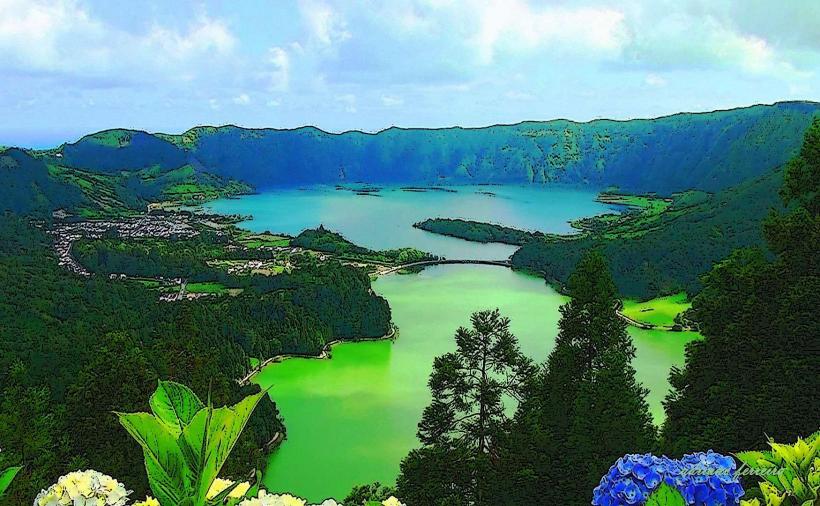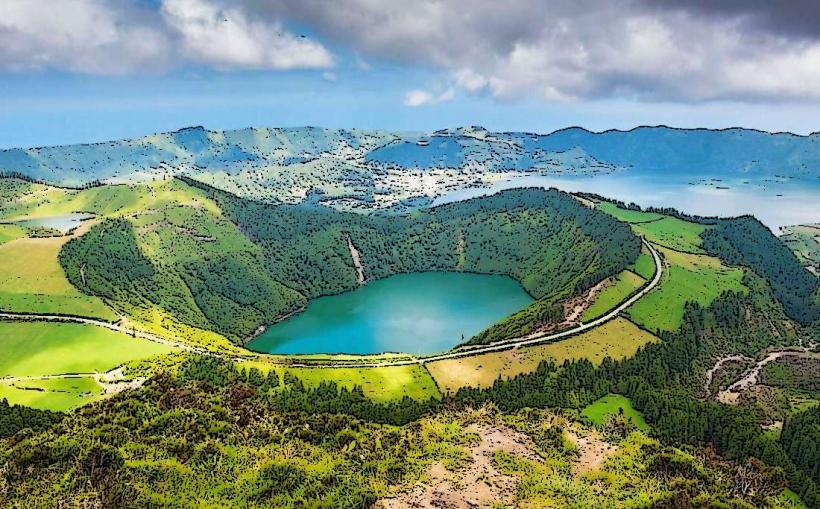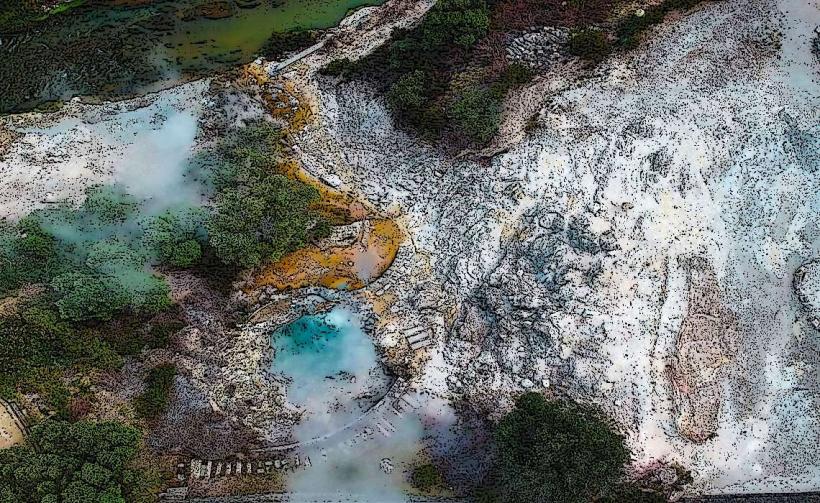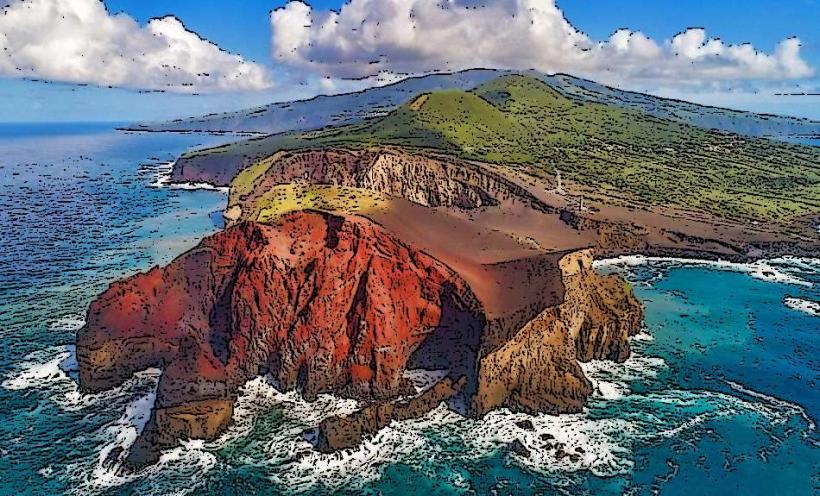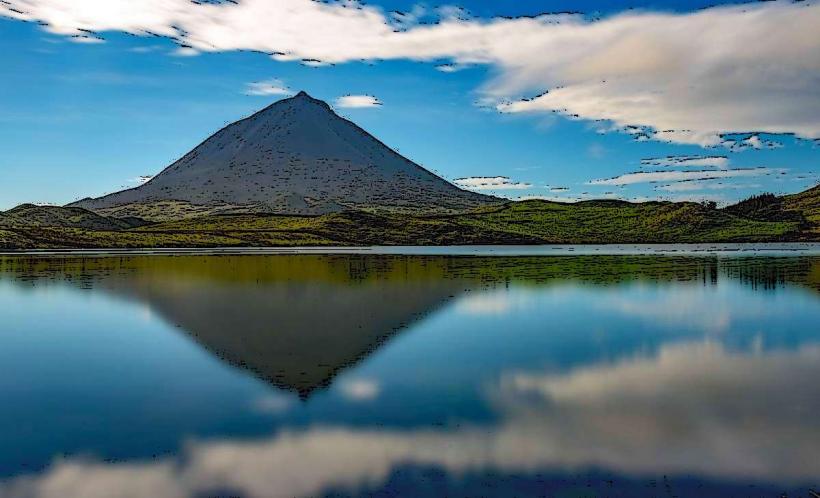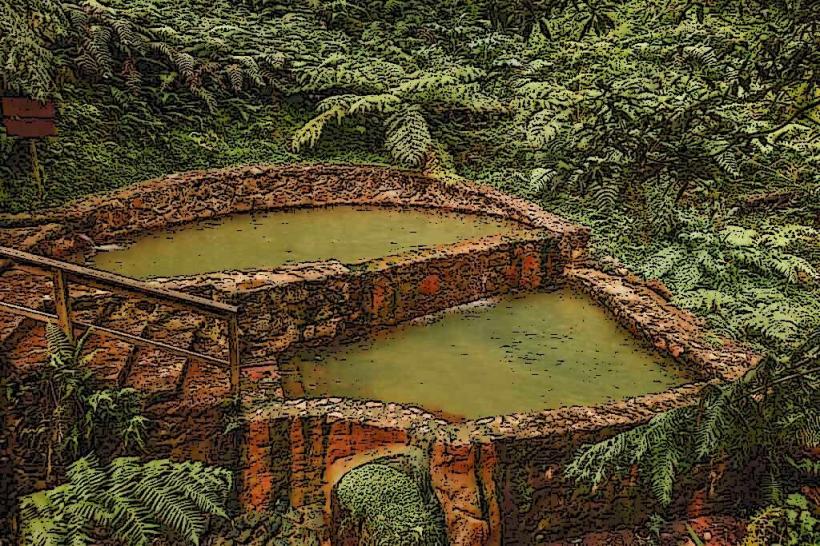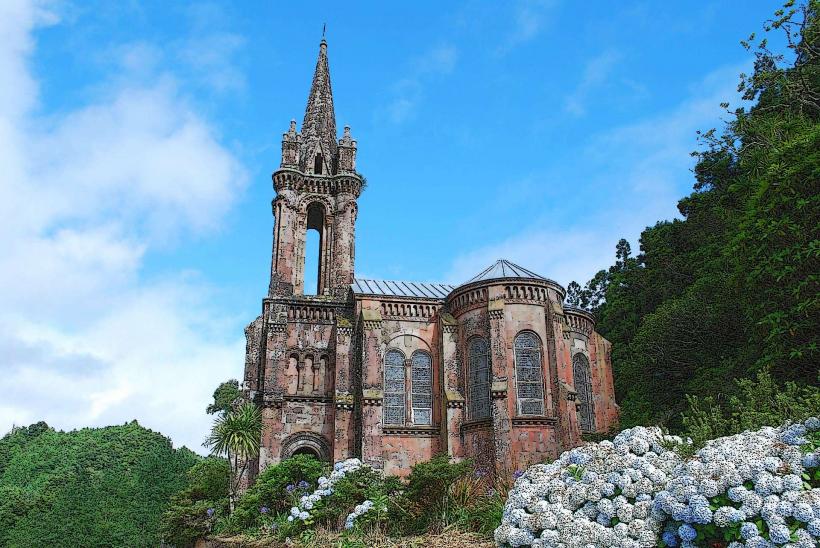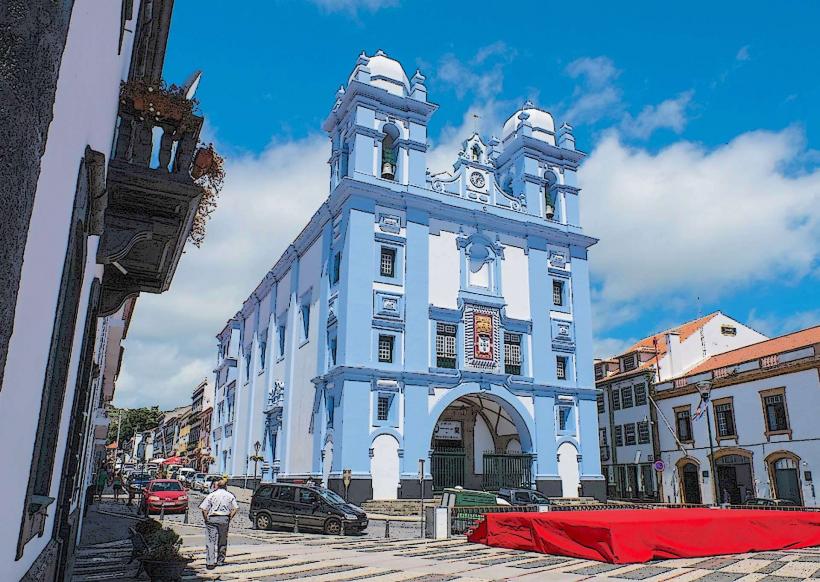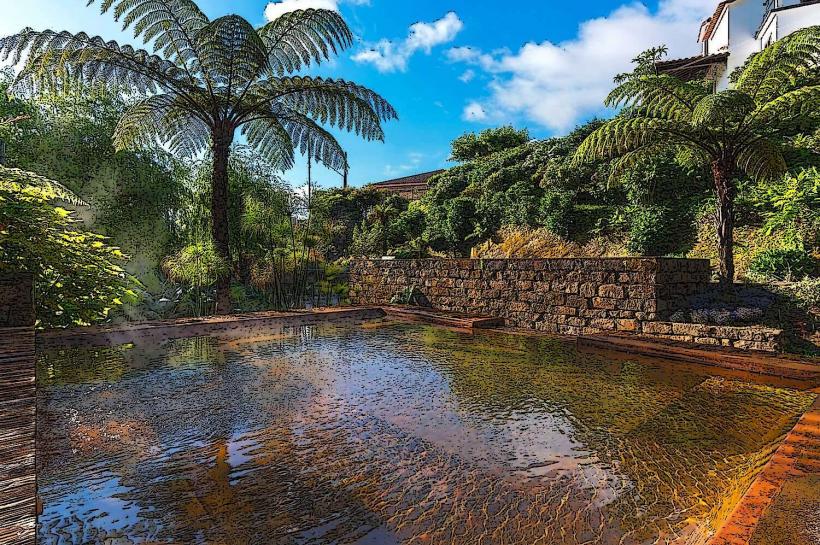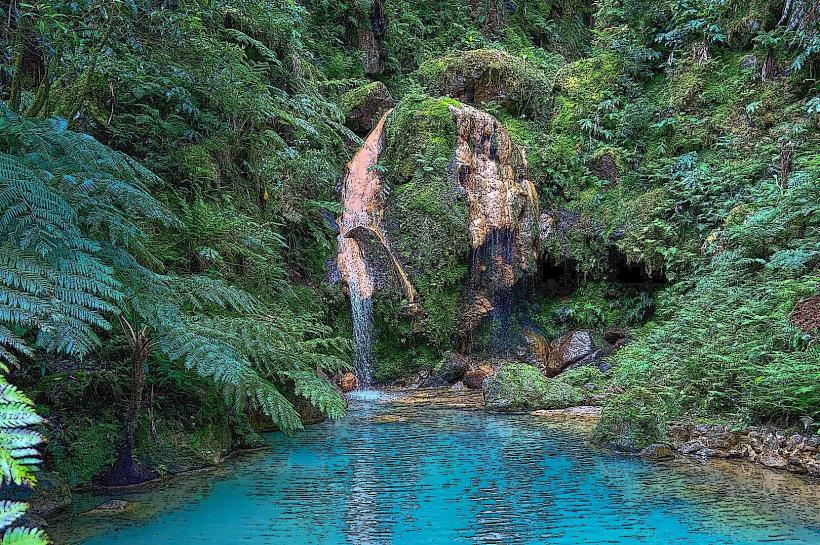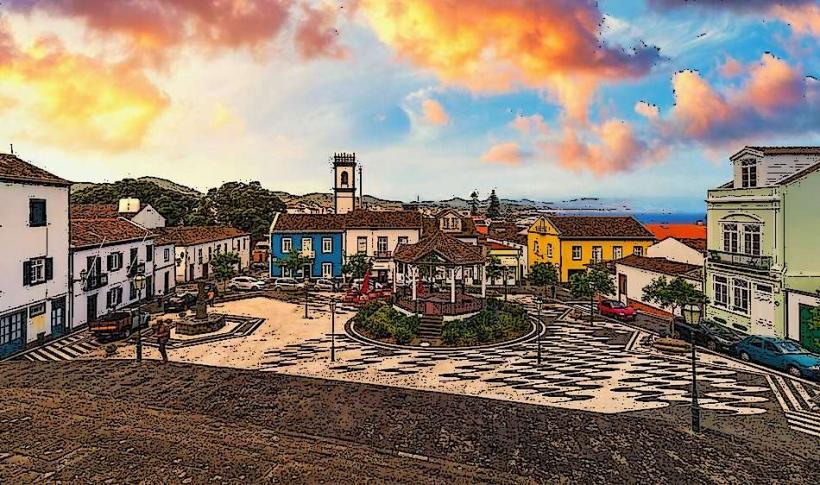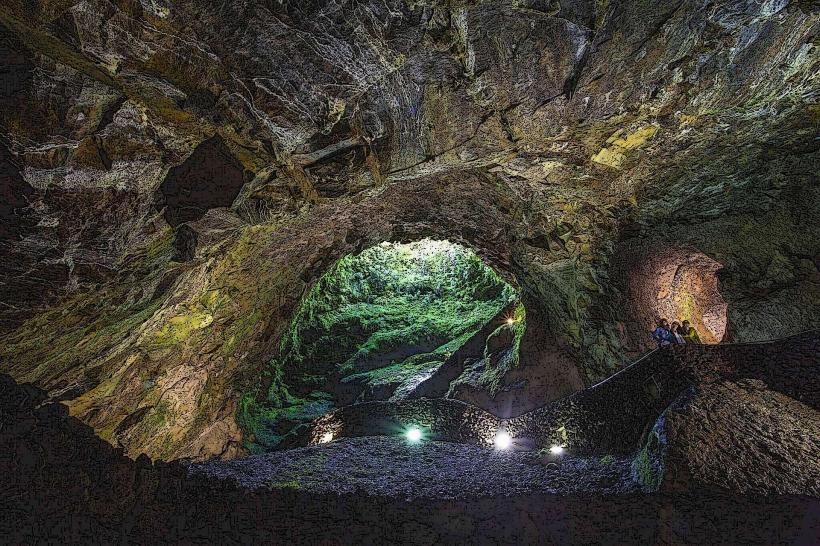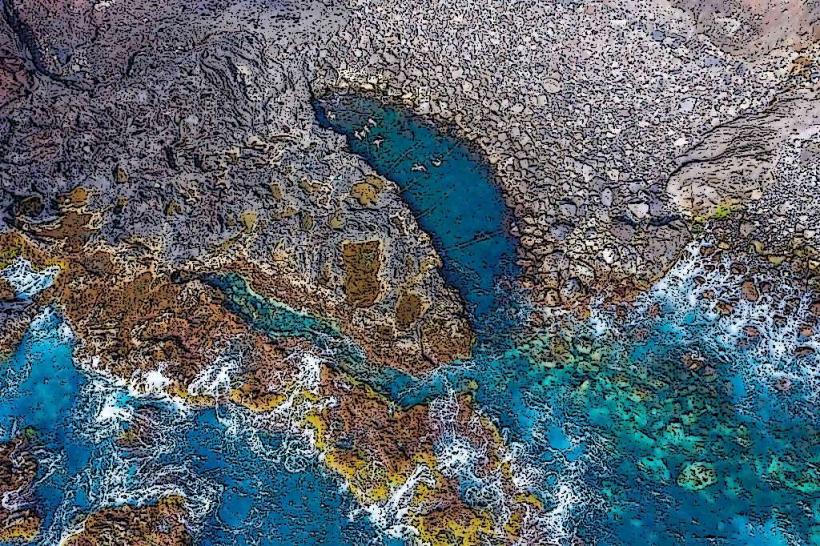Information
Landmark: Gruta das TorresCity: Azores
Country: Portugal
Continent: Europe
Gruta das Torres is a remarkable volcanic cave located on Pico Island, one of the Azores' most well-known islands, famed for its dramatic volcanic landscapes and stunning natural beauty. This cave is a significant geological feature formed by volcanic activity and is one of the longest lava tubes in the Azores.
1. Geological Formation
- Volcanic Origins: Gruta das Torres was formed by volcanic eruptions that occurred around 4,000 years ago. Lava flowing from the Pico Volcano created the tube, which is an excellent example of a lava tube cave. Lava tubes are formed when lava flows through underground channels, cooling and solidifying on the surface while the interior remains molten, eventually draining out and leaving behind a hollow passage.
- Structure: The cave is over 5 kilometers (3 miles) long and features a wide range of volcanic formations. The cave’s most striking features include its smooth, sloping walls, rock formations, and occasional mineral deposits. In many places, the ceiling is relatively low, requiring visitors to crouch or stoop as they explore.
2. Visitor Experience
- Exploration: Gruta das Torres is one of the most popular caves to visit on Pico Island, providing a unique opportunity to explore an underground lava tube. The cave is accessible to the public and offers guided tours that explain the cave's geological significance and the history behind its formation.
- Guided Tours: Tours of Gruta das Torres are guided, providing visitors with insights into the cave's formation, the volcanic activity in the region, and the local fauna and flora. Knowledgeable guides lead groups through the cave, sharing their expertise on the unique geological structures and features found inside. The tours last about 45 minutes to an hour and are suitable for most visitors, though some parts of the cave can be narrow and require careful navigation.
- Cave Features:
- Lava Formations: Visitors can observe impressive lava formations, including stalactites, stalagmites, and lava drapery. These features are formed when molten lava cools and solidifies in intricate and unique shapes.
- Ceiling and Walls: The ceiling of the cave varies in height and shape, creating an interesting dynamic for visitors. Some parts of the cave are narrow, while others are more expansive, allowing for a better sense of the scale of the lava tube.
3. Environmental and Ecological Significance
- Fauna: The cave is home to several species of bats, including the Pipistrelle bat, which roams the cave in search of insects. These bats are important to the local ecosystem as they help control insect populations. However, due to the delicate environment, it is crucial for visitors to respect the space and avoid disturbing the bats.
- Ecosystem: The cave’s dark, damp environment supports the growth of specialized plants such as mosses, lichens, and ferns. These organisms thrive in the humid conditions inside the cave, adding to its ecological diversity.
- Conservation: Gruta das Torres is part of the Pico Island Natural Park, and efforts are made to preserve the cave’s delicate ecosystem. Visitors are encouraged to follow the guidelines set by the park to help protect this natural wonder.
4. Accessibility and Facilities
- Location: Gruta das Torres is located near the village of Lajes do Pico, on the south side of Pico Island. It is easily accessible by car, and there are signs along the road leading to the cave entrance.
- Visitor Center: Before entering the cave, visitors stop at the Gruta das Torres Visitor Center, where they can learn about the cave’s geological significance through exhibits and interactive displays. The visitor center provides detailed information about Pico Island's volcanic activity, lava tubes, and the island’s rich geological history.
- Safety and Equipment: The cave is equipped with proper lighting to ensure safe exploration. Visitors are required to wear helmets and are provided with walking sticks to assist in their journey. While the cave is safe for most visitors, it is important to follow the instructions of the guide and to be cautious when navigating some of the narrower parts of the cave.
5. Health and Safety
- Physical Requirements: Exploring Gruta das Torres requires moderate physical effort. The cave has uneven floors, and visitors may have to crouch or navigate through narrow passages. It’s important for visitors to be prepared for the conditions and to wear appropriate footwear (sturdy shoes) to ensure safety.
- Precautions: As with many natural sites in the Azores, it is recommended that visitors wear comfortable clothing, especially long pants and closed-toe shoes, for protection during the tour. The cave can be damp, so it’s advisable to bring a light jacket or sweater.
6. Visitor Tips
- Book in Advance: Due to its popularity, it’s a good idea to book a tour in advance, particularly during the high season (May to October). This ensures you have a spot on the tour and allows the visitor center to manage groups more effectively.
- Respect the Environment: As a natural site with delicate ecosystems, visitors are encouraged to follow the rules set by the local authorities, including not touching the walls or disturbing the wildlife within the cave.
- Time to Visit: The best time to visit Gruta das Torres is during the spring and summer months, when the weather is mild, and access is most convenient. However, the cave remains open throughout the year, and guided tours are available year-round.
7. Nearby Attractions
- Pico Volcano: The island’s most famous landmark, Pico Volcano, is located nearby and is the highest peak in Portugal. Visitors can hike to the summit for panoramic views of Pico Island and the surrounding Azorean archipelago. The volcano offers trails that take hikers through volcanic landscapes, including craters and lava fields.
- Lajes do Pico: The village of Lajes do Pico, where Gruta das Torres is located, offers a picturesque setting with traditional Azorean architecture, scenic coastal views, and opportunities for whale watching.
- Museu do Pico: This museum in the town of Madalena, not far from Gruta das Torres, focuses on the natural history and cultural heritage of Pico Island. It provides additional context about the island’s volcanic activity, including the formation of lava tubes like Gruta das Torres.
8. Best Time to Visit
- Spring and Summer: The most popular time to visit Pico Island is during the spring and summer months (April to September) when the weather is typically warmer and drier. These months are ideal for outdoor activities such as hiking, whale watching, and exploring caves.
- Avoiding Crowds: If you prefer a quieter experience, consider visiting during the shoulder seasons (April-May or September-October). While the cave is open year-round, fewer tourists tend to visit outside the peak summer months.
9. Cultural and Historical Significance
- Human History: The lava tubes like Gruta das Torres have long been used by locals. In the past, they were occasionally used for shelter during storms or volcanic activity, although the use of caves for habitation has decreased with modern construction.
- Pico Island’s Volcanic Legacy: Gruta das Torres, along with other lava tubes on Pico Island, plays a significant role in understanding the island's volcanic heritage. Pico’s volcanic landscape has shaped the culture and history of its people, influencing everything from local agriculture to architecture.
Conclusion
Gruta das Torres is a spectacular natural wonder on Pico Island that showcases the power and beauty of volcanic activity. Offering an immersive experience into the world of lava tubes, the cave provides insight into the geological history of the Azores, while also offering visitors a chance to explore one of the longest and most impressive lava tubes in the region. Whether you’re a geology enthusiast, nature lover, or simply looking for a unique adventure, Gruta das Torres is a must-see destination when visiting Pico Island.

